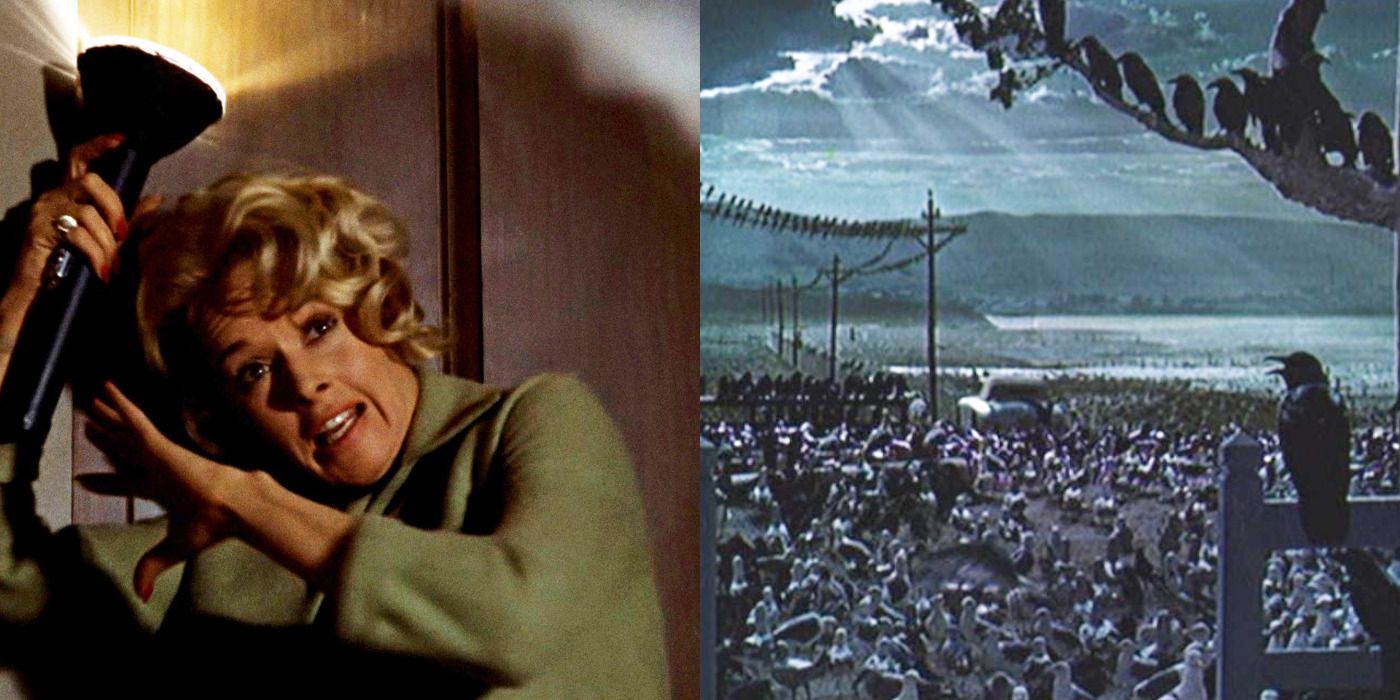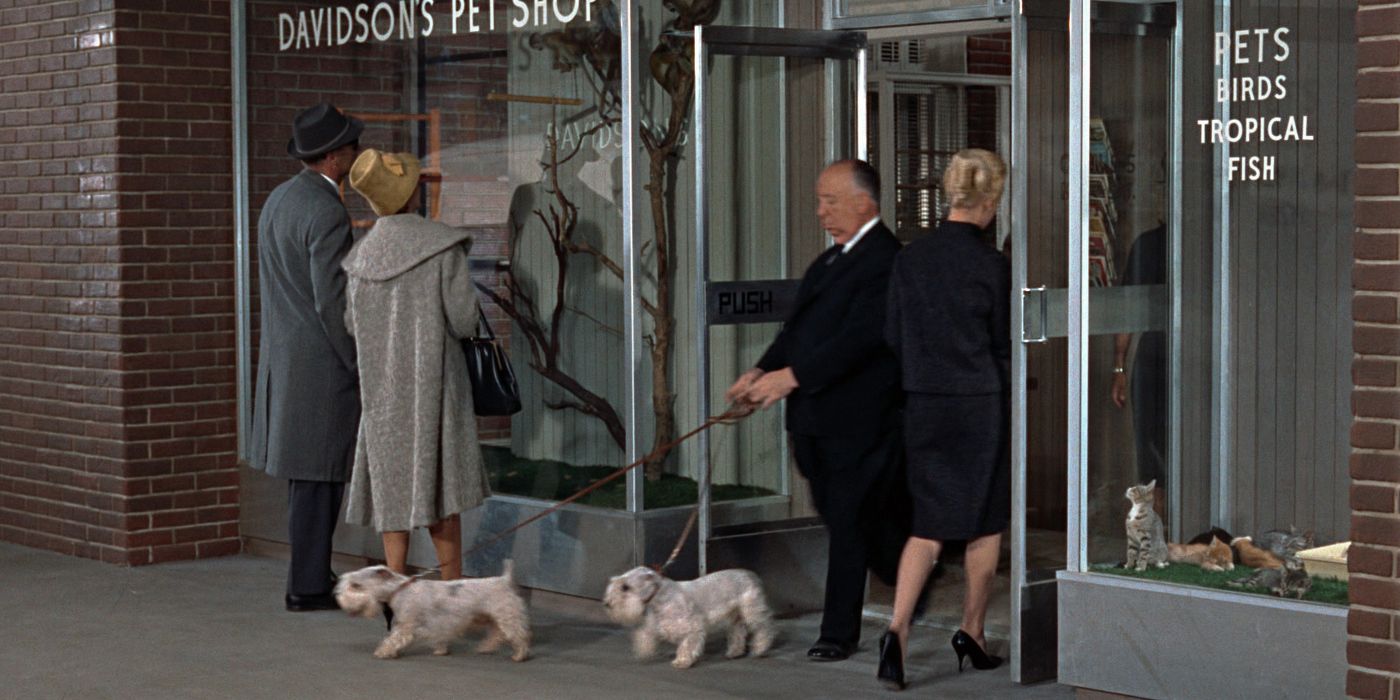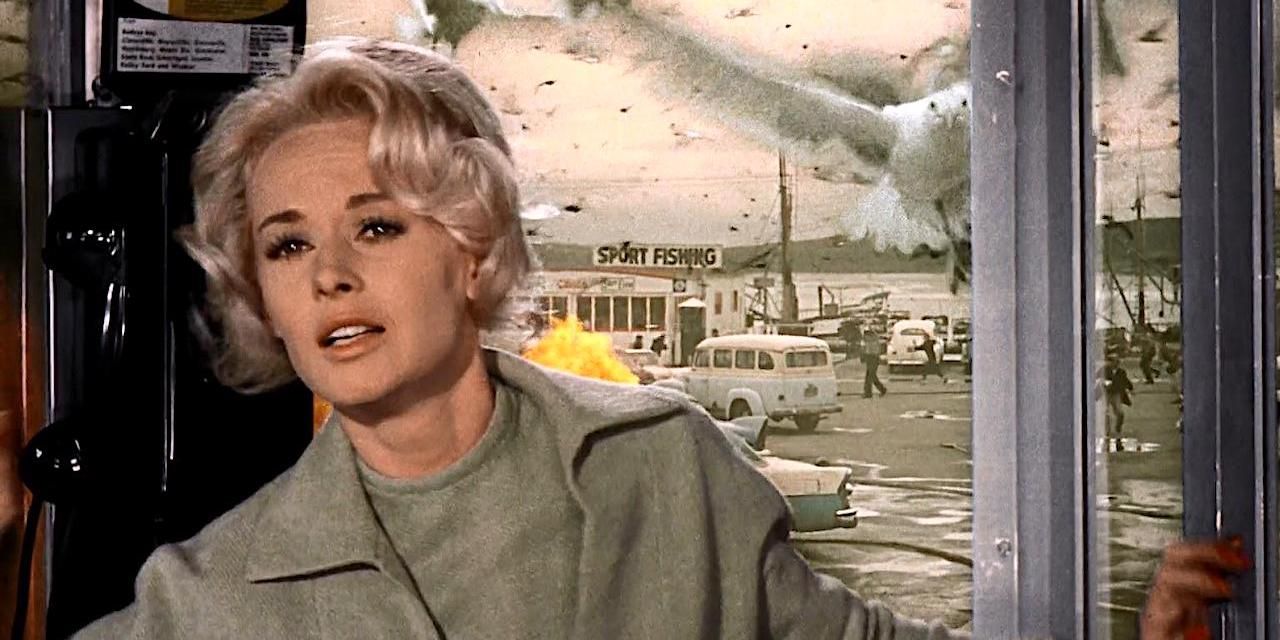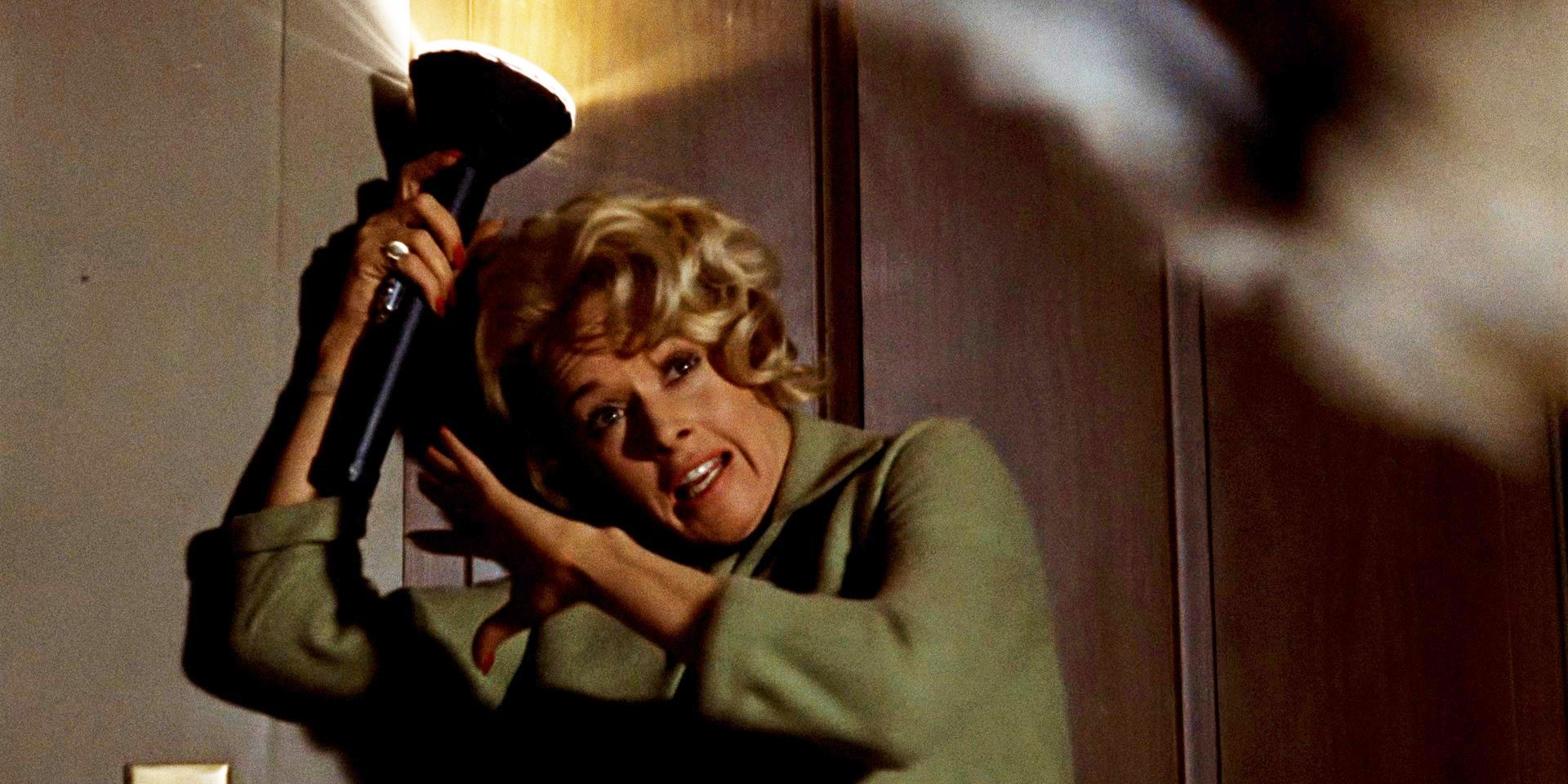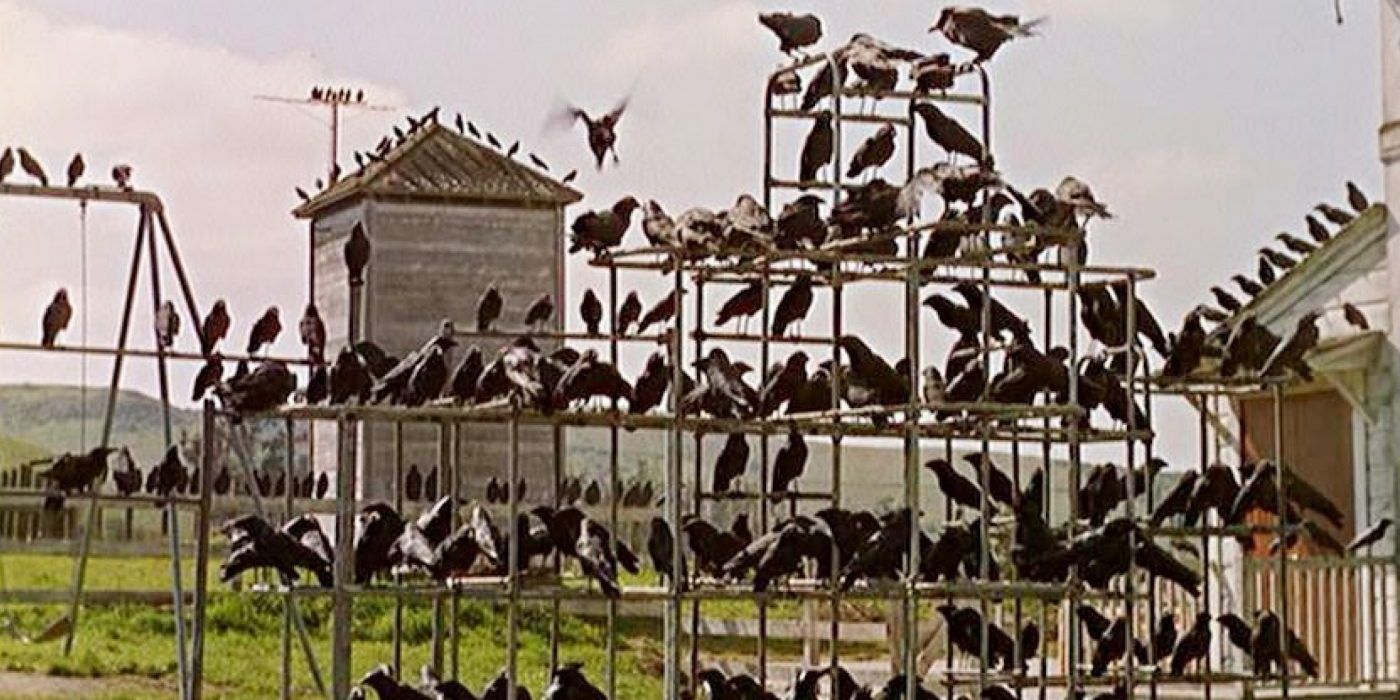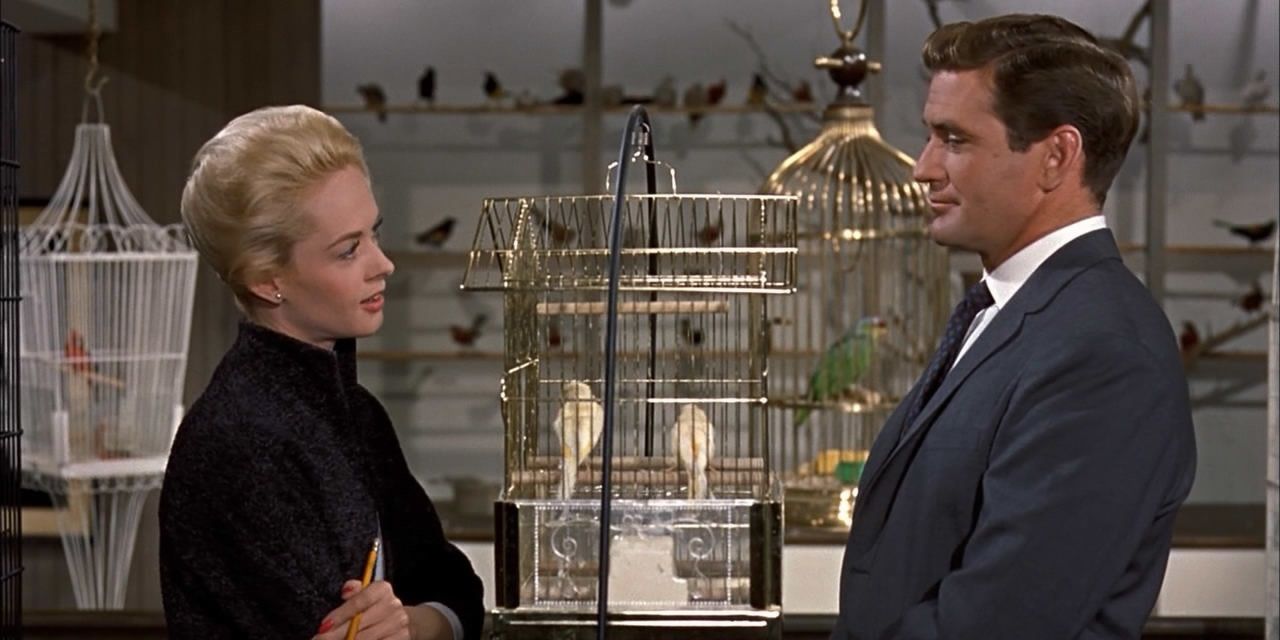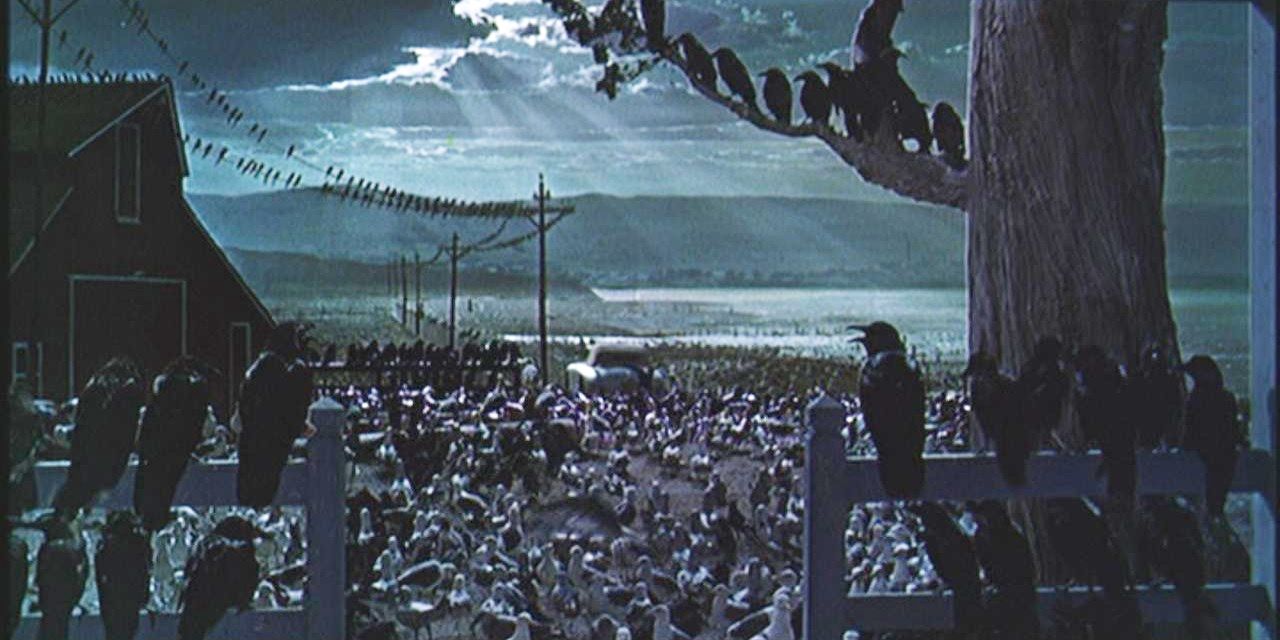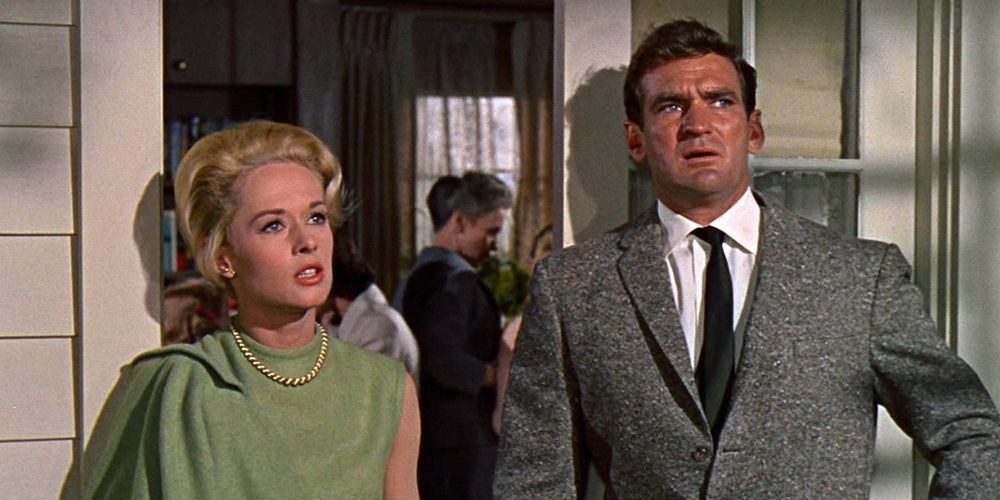Alfred Hitchcock is renowned as the master of suspense. Throughout his decades-long career, he directed countless acclaimed thrillers, from The 39 Steps to Strangers on a Train to North by Northwest. After receiving some of the best reviews of his filmmaking life for 1960’s Psycho, Hitchcock brought the “natural horror” subgenre into the mainstream with 1963’s The Birds. Adapted from the short story of the same name by Daphne du Maurier, it tells the story of a small town being terrorized by literal angry birds.
Following up Psycho was no easy feat, but The Birds was similarly praised by critics. Some of the effects have aged poorly since the movie was made decades before CGI was invented (let alone perfected), but all the things that matter most in cinema, like story, character, and visuals, still hold up today.
Classic Hitchcockian Suspense
Hitchcock has been dubbed the “Master of Suspense” for his use of groundbreaking cinematic techniques like the bomb-under-the-table. His movies keep the audience on the edge of their seat, frightened for the protagonists and intrigued by the mysteries.
The Birds is a prime example of a Hitchcockian suspense thriller. As always, it’s all about the build-up. Hitchcock meticulously builds to payoffs like the phone booth attack and the birds coming down the chimney. The anticipation of the birds’ arrival is often just as bone-chilling as when they actually show up and swarm on people.
The Theme Of Nature Fighting Back
The reason for the birds’ relentless attack on humanity is never canonically explained in The Birds, but the premise can be read as an allegory for humans taking nature for granted or interfering with the natural order of things and facing the consequences of nature fighting back.
As environmental issues like climate change and deforestation worsen every year, The Birds’ themes of nature fighting back, unfortunately, become more and more relevant.
Hitchcock’s Use Of Silence
Hitchcock usually hired Bernard Herrmann to compose frightful string orchestrations to punctuate his thrillers. The most iconic example, of course, is the piercing violin notes of “The Murder” underscoring Marion Crane being butchered in the shower in Psycho.
With The Birds, Hitchcock forwent a traditional musical score and instead made careful use of a filmmaker’s greatest asset in the sound department: silence. Psycho’s violin strings worked wonders for the terror of Marion’s murder, but the eerie silence of The Birds gives each spooky set piece a refreshing sense of realism.
George Tomasini’s Hugely Influential Editing
The Birds is “pure cinema” in that it puts much more focus on uniquely cinematic elements like cinematography and editing than elements borrowed from other mediums like acting and dialogue. George Tomasini, one of Hitchcock’s go-to editors who previously cut together Rear Window, Vertigo, North by Northwest, and Psycho, handled the editing of The Birds.
Tomasini’s masterful use of techniques like eyeline matches and montage theory has since influenced dozens of filmmakers. A great example of Tomasini’s use of editing to create tension is when Melanie is watching a bird land on a jungle gym in one of Hitchcock's most imitated scenes. Tomasini cuts back and forth between more and more birds joining the jungle gym and Melanie becoming increasingly disturbed by it until every inch of the jungle gym is packed with birds. In this scene, Tomasini engages the audience with cutting alone.
Slow-Burn Pacing
Hitchcock doesn’t rush into the genre thrills promised by the semi-apocalyptic premise of The Birds. Throughout the first half of the movie, the director takes the time to introduce the characters before the birds turn against them.
Fast-paced horror movies with nonstop unyielding terror, like Hereditary or A Nightmare on Elm Street, can be a real treat, but the slow-burn horror movies that make the audience wait for their payoffs, like Alien and Rosemary’s Baby and indeed The Birds, can be even more effective.
The Eerie Final Scene
The final scene of The Birds is one of the most famous endings in horror cinema. As the group gets ready to escape in Melanie’s car, hundreds of birds calmly gather outside the house and stare at them. None of the birds swoop down to attack; they all just perch around the house and ominously watch the group as they shuffle over to the car and quietly leave.
The meaning of this ending is open to interpretation. All these years later, audiences are still perplexed and disturbed by it. Like the ending of Dawn of the Dead, the survivors get away, but their fate is hauntingly uncertain.
Three-Dimensional Protagonists
Horror movie protagonists are usually one-note archetypes, like the generic high schoolers found in most slashers and the interchangeable nuclear families who keep buying haunted houses, but The Birds’ human cast is filled with three-dimensional characters played by screen legends.
There’s a biting irony in most of The Birds’ protagonists being unlikable and unsympathetic. Rod Taylor plays Mitch Brenner, a self-important lawyer; Jessica Tandy plays Lydia Brenner, his overbearing mother; Tippi Hedren plays Melanie Daniels, a rich socialite who dedicates huge chunks of her ample free time to trivial pranks. When birds attack them, there’s an underlying feeling that maybe they deserve it.

